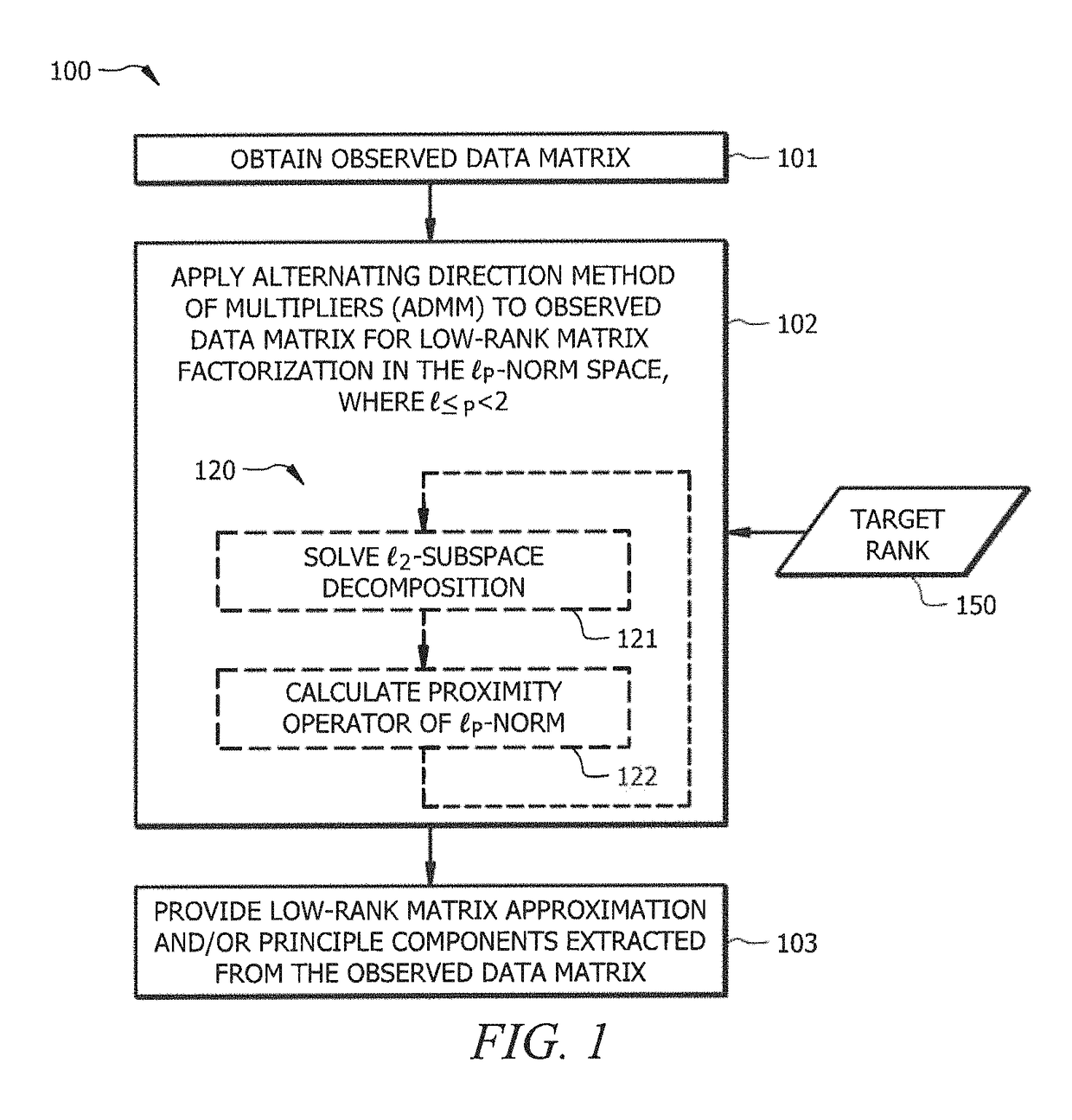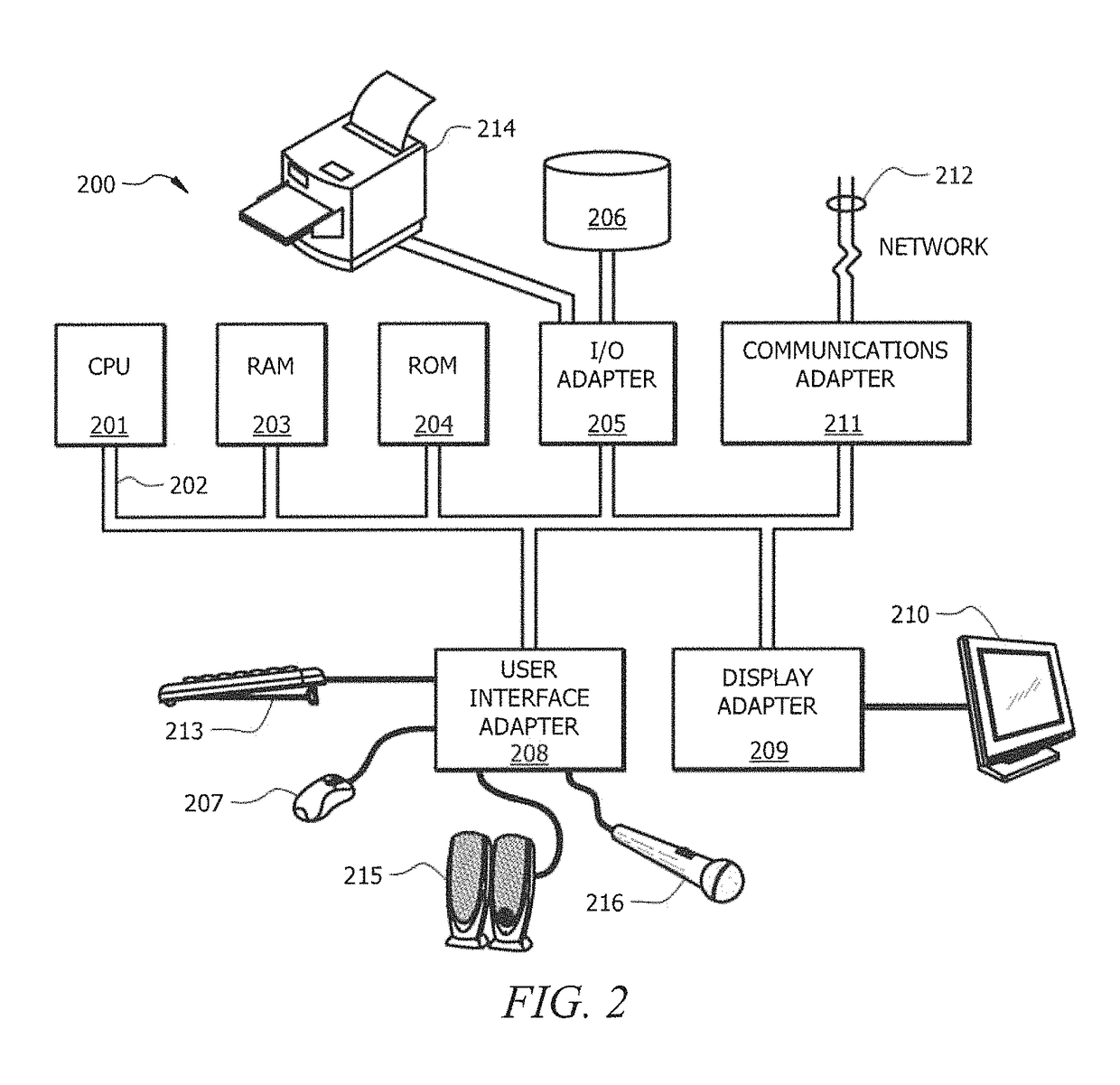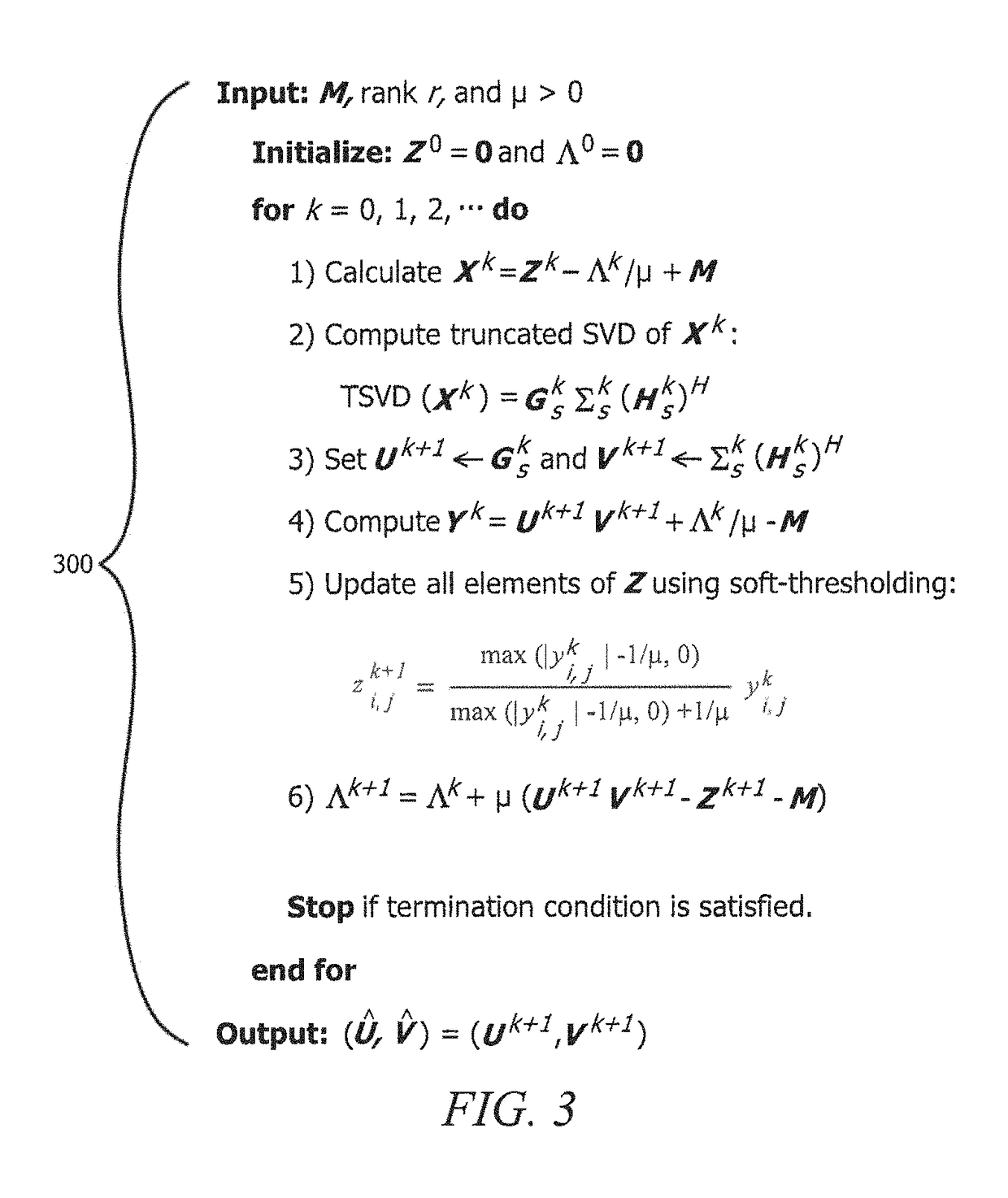Systems and methods for robust low-rank matrix approximation
a low-rank matrix and approximation system technology, applied in the field of estimation of principal components of observed data matrices, can solve the problems of low computational complexity of the aco, inability to work well in the presence of impulsive noise, and low subspace estimation performance of the aco, so as to improve the numerical performance, reduce the objective function value, and improve the effect of numerical performan
- Summary
- Abstract
- Description
- Claims
- Application Information
AI Technical Summary
Benefits of technology
Problems solved by technology
Method used
Image
Examples
Embodiment Construction
[0026]Observed data may be represented as the matrix M∈n1×n2. For example, the matrix M may comprise a matrix of a plurality of data points (e.g., one per row), a single object (e.g., a rectangular image with the matrix entries being pixel intensities), etc. Low-rank matrix approximation provides a lossy, compressed version of the observed data matrix. Such low-rank matrix approximation may, for example, be utilized in many application areas, such as dimensionality reduction, computer vision, machine learning, signal processing, etc.
[0027]Embodiments of the present invention implement low-rank matrix factorization in the lp-norm space (i.e., function spaces defined using a natural generalization of the p-norm for finite-dimensional vector spaces), where pp-PCA, it being understood that lp-PCA as used herein refers to cases that employ the lp-norm cost function with p1-norm PCA (referred to herein as l1-PCA) technique for low-rank matrix approximation of observed data matrices. A lp-...
PUM
 Login to View More
Login to View More Abstract
Description
Claims
Application Information
 Login to View More
Login to View More - R&D
- Intellectual Property
- Life Sciences
- Materials
- Tech Scout
- Unparalleled Data Quality
- Higher Quality Content
- 60% Fewer Hallucinations
Browse by: Latest US Patents, China's latest patents, Technical Efficacy Thesaurus, Application Domain, Technology Topic, Popular Technical Reports.
© 2025 PatSnap. All rights reserved.Legal|Privacy policy|Modern Slavery Act Transparency Statement|Sitemap|About US| Contact US: help@patsnap.com



